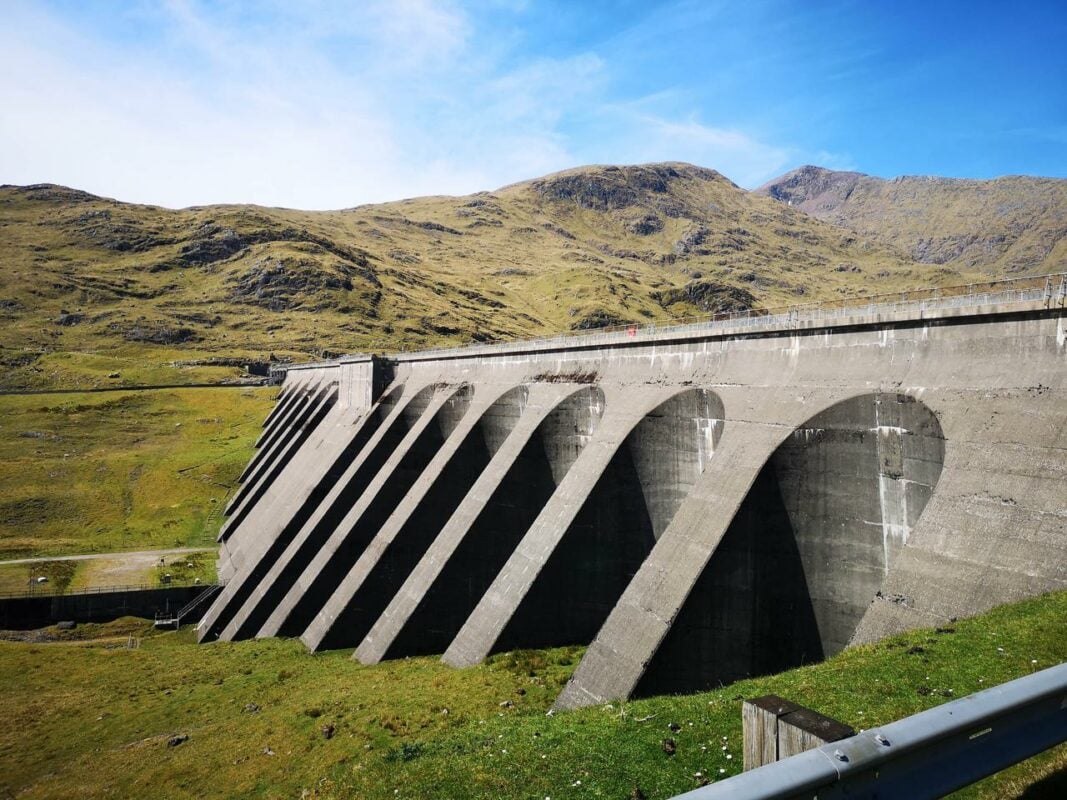
This project could bring the overall capacity of the site to over 1GW. Image: Drax.
Renewable energy company Drax Group has secured development consent for a 600MW underground pumped storage hydro (PSH) plant in Scotland.
The project will be located at the aptly named ‘Hollow Mountain’ Cruachan Power Station in Argyll and include an expansion of the site to include the new £500 million underground plant. This would bring the overall capacity of the site to over 1GW.
Recognising the potential of the project, which could be operational by 2030, the Scottish government formally approved the plans earlier this week. The expansion will also require an updated financial stabilisation mechanism from the UK government.
The new 600MW plant at Cruachan is part of a wider £7 billion strategic investment plan by Drax in clean energy technologies between 2024 and 2030.
“This is a major milestone in Drax’s plans to build Britain’s first new PSH plant in a generation,” said Will Gardiner, CEO of Drax Group.
“These plants play a critical role in stabilising the electricity system, helping to balance supply and demand through storing excess power from the national grid. When Scotland’s wind turbines are generating more power than we need, Cruachan steps in to store the renewable electricity so it doesn’t go to waste.
“With the right support from the UK government, Drax will invest £500 million to more than double Cruachan’s generating capacity and support almost 1,000 jobs across the supply chain during construction.”
PSH could be an important technology in achieving net zero. It can be used to complement intermittent energy generation by releasing power when there is a spike in demand. This is done by using reversible turbines to pump water from a lower reservoir to an upper reservoir which stores excess power from sources such as wind farms when supply outstrips demand. These same turbines are then reversed to bring the stored water back through the plant to generate power when the country needs it.
Drax has highlighted that there is a lack of an existing government framework to support long-duration electricity storage and flexibility technologies. This means private investment cannot be secured for new pumped storage hydro projects, with no new plants having been built since Dinorwig in North Wales in 1984.
A final investment decision on the expansion of Cruachan remains dependent on the creation of such a framework.
This had been highlighted by Scotland’s First Minister Humza Yousaf who called on the government during a tour of the Cruachan facility yesterday (25 July) to “provide an appropriate market mechanism” for projects like this.
Yousaf said: “Hydro power has real potential to play a greater role in our transition to net zero, and to help ensure a resilient and secure electricity supply across the UK. The expansion of Cruachan will help to strengthen our energy security by providing much needed resilience in the system, supporting hundreds of jobs and providing a real boost to the Scottish economy.
“However, we know that there remain a number of challenges in developing new hydro power projects in Scotland. The Scottish government will continue to urge the UK government to provide an appropriate market mechanism for hydro power and other long-duration energy storage technologies, to ensure that the potential for hydro power is fully realised.”

